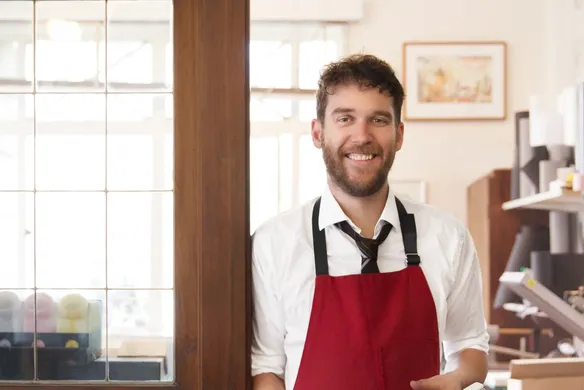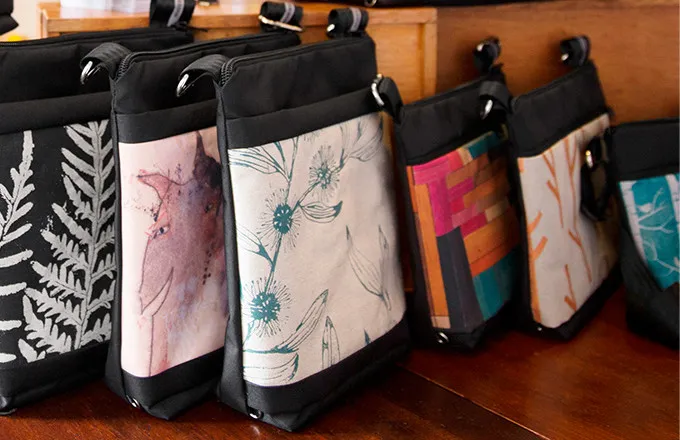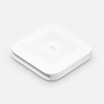Matt Thomson started his career as a bag designer and manufacturer out of necessity. While studying engineering and industrial design at Swinburne University, he would travel to and from class on a vintage Vespa motorscooter that didn’t have much functional storage space. So he decided to make himself a bag, and began experimenting. The results led him to launch mattt made-to-order bags in Melbourne.
That was in 2000. Since then, Matt (whose brand name combines his full name and last initial) has sold his bags at pop-up markets and opened a retail store in the famous Gertrude Street precinct in Fitzroy. He now operates out of the Nicholas Building, a creative hub of makers, artists and designers in Melbourne’s Central Business District, where he processes debit and credit cards payments with Square Reader.
Matt sat down with us to share the story behind his business.
Making bags seems like a technical process — what was it like getting started?
I’d always been interested in hiking (and making things), so I decided to try and make myself a bag. After a bit of experimenting and trying out ideas I came up with something that worked. This also made me realise I enjoyed sewing, as I could have an idea and readily make it pretty much straight away. So I started making simpler bags for friends. Then their friends also wanted to buy a bag and it organically grew from there to markets and stocking in shops.
Early on you opened a retail store in Fitzroy. What are the challenges you think retail business owners face, and how did you learn to overcome them?
Setting up a retail space is challenging in a number of ways, both in trying to balance the optimism about how well it will go with the practicality of it being sustainable when choosing a location, as well as managing all the smaller day-to-day details involved in running a space.
My current location, the mattt SHOP in the Nicholas Building, means that this first challenge has been offset by combining my workshop and retail spaces in one. So I can work on online orders during the day when I don’t have retail customers.
I manage the second challenge through prioritising what needs to be done and trying to only focus on what will most benefit the customers’ experience when they visit the space. An example of this is having consistent hours so that customers are confident you’ll be open when you say you are (and communicate when you’re taking time off).
How do the small businesses in the Nicholas Building interact and rely on each other?
The community in the Nicholas Building is terrific and supportive. There is direct support through both the sharing of tools and knowledge (both from the making and business side of things) along with collaboration on and referring each other for projects.
There has also recently been a number of makers setting up retail shop and showrooms in the building (rather than just workspaces) which has made the building a destination for customers looking for these types of products.
What’s the one piece of advice you’d give to anyone considering opening their own small business?
Start small and test and iterate what you’re doing as much as possible rather than trying to do everything at the same time. It’s easier to make mistakes and learn from what you do while making the most of being small and flexible by not needing to do things at scale straight away.
How do you see your business growing?
My business has taken many forms over the last 15 or so years. I’ve run retail spaces, markets, wholesale and online and operated with multiple staff, right down to doing it all by myself, which is the current scale.
At the moment I am focusing on custom or made-to-order products offered through the mattt SHOP and online, which required me to downscale many parts of my business. That has actually made it both more financially viable and creatively fulfilling. I hope to further grow my business in this direction by improving my website and offering interesting new products that combine the handmade element with useful technology. This has included RFID linings (to guard against identity theft from passports and credit cards) and Chipolo Bluetooth trackers (customers can link their bag to an app on their smartphone).
Is there a driving force for you to implement technology in your business?
Having a background in engineering and industrial design has meant I’ve always looked for ways to enhance what I do with technology. One of the first ways I did this was purchasing my own digital fabric printer which has allowed me to print fabrics in-house as required. This has made it very easy to test new ideas and create custom fabrics.
Another way I’ve used technology from the early stages is by having an online store for over eight years. Having an easy way for customers to purchase my bags online has allowed me to develop and iterate my website myself rather than having to outsource it to web developers.
![]()













